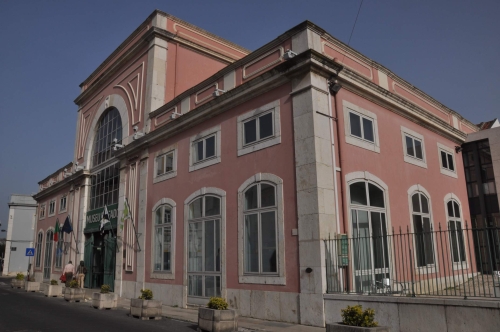
Since opening to the public in 1998, the Museum has incorporated items belonging to hundreds of interpreters, authors, composers, musicians, instrument manufacturers, scholars and researchers, professional and amateur artists: hundreds of personalities that witnessed and wrote the history of Fado, and that did not hesitate to cede the testimonial of their affective and memorial patrimony to us, for the construction of a collective project.
Museu do Fado pays tribute to all of them, investigating, maintaining and promoting the singularities of this performing art, born in Lisbon’s historic neighbourhoods. Throughout its approximate 200 years of history, fado was able to absorb several cultural and technological influences, tracing a consecration path in the most distinct areas, and perpetuated during nearly the entire 20th century, in the exact proportion of its popular celebration.
Since its creation and during a decade of activity, the Museum has incorporated an unique body of collections of primordial relevance to the study of our cultural and ethnographical patrimony: several collections of periodicals, pictures, posters, music scores, music instruments, phonograms, clothes and performing props, trophies, medals, professional documents, contracts, licences, professional cards, among many other testimonies that co-existed and/or created Fado. It is an essentially unattainable and immaterial patrimony we all consider ephemeral, elusive, intangible, unrepeatable, and thus hard to materialize in another testimony than that of the individual memory of each of us.
As a testimony to this interdependence relation between the material museological pieces and the immateriality of the patrimony they evoke and document, Museu do Fado - municipal museological equipment entirely consecrated to the fado universe - has incorporated the functional valences inherent to the museology of the unattainable patrimony since its genesis.
In this context, the Museum has developed a programme of activities which includes regular temporary exhibitions, museum’s editions, seminar and workshops, editorial and discographic presentations, along with scientific research activities, encouraging partnerships with higher education institutions while maintaining an open dialogue with the holders of this practice knowledge: interpreters, musicians, authors, composers or instrument builders.
In fact, this assumption of the immateriality of our museological object - the unattainable fado universe - has been a central assumption of the Museum’s designs, structured on an open dialogue with the fado’s universe protagonists. Thanks to their art and creative talent, fado’s immaterial patrimony still builds and recreates itself, today as yesterday, in the circuits of an immense museum without walls that opens from Lisbon to the world.
EGEAC EM presented an application to the Operational Cultural Programme in order to direct the Project of Recovery and Valorisation of Museu do Fado in the last trimester of 2006. Composed by different intervention components, this application aimed for the recovery of the roofing structure and frontal coating of the building, the elimination of architectonic barriers - enabling accessibility for impaired mobility visitors - increase of security conditions through the installation of closed circuit TV systems, and the valorisation of the museological circuit through the increase and renovation of the museum’s permanent exhibition. The Project of Recovery and Valorisation of Museu do Fado took place in 2008.
With this increase and renovation of the exhibition circuit, the Museu do Fado earned, in 2009, several prizes and awards including the Prize Essay and Disclosure from the Amália Rodrigues Foundation, the Honorable Mention - Best Portuguese Museum from APOM (Portuguese Association of Museology), and the classification, by Tourism of Portugal, among the five finalists in the category of "Public Rehabilitation Project".